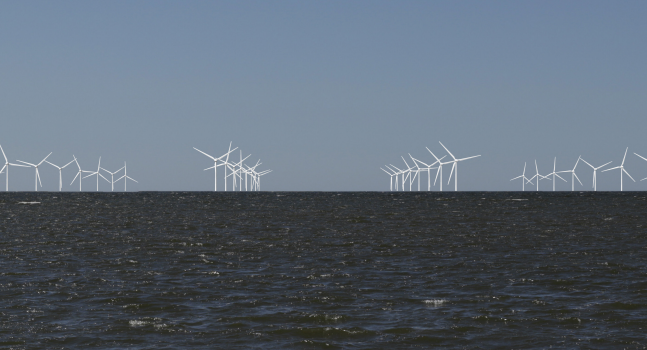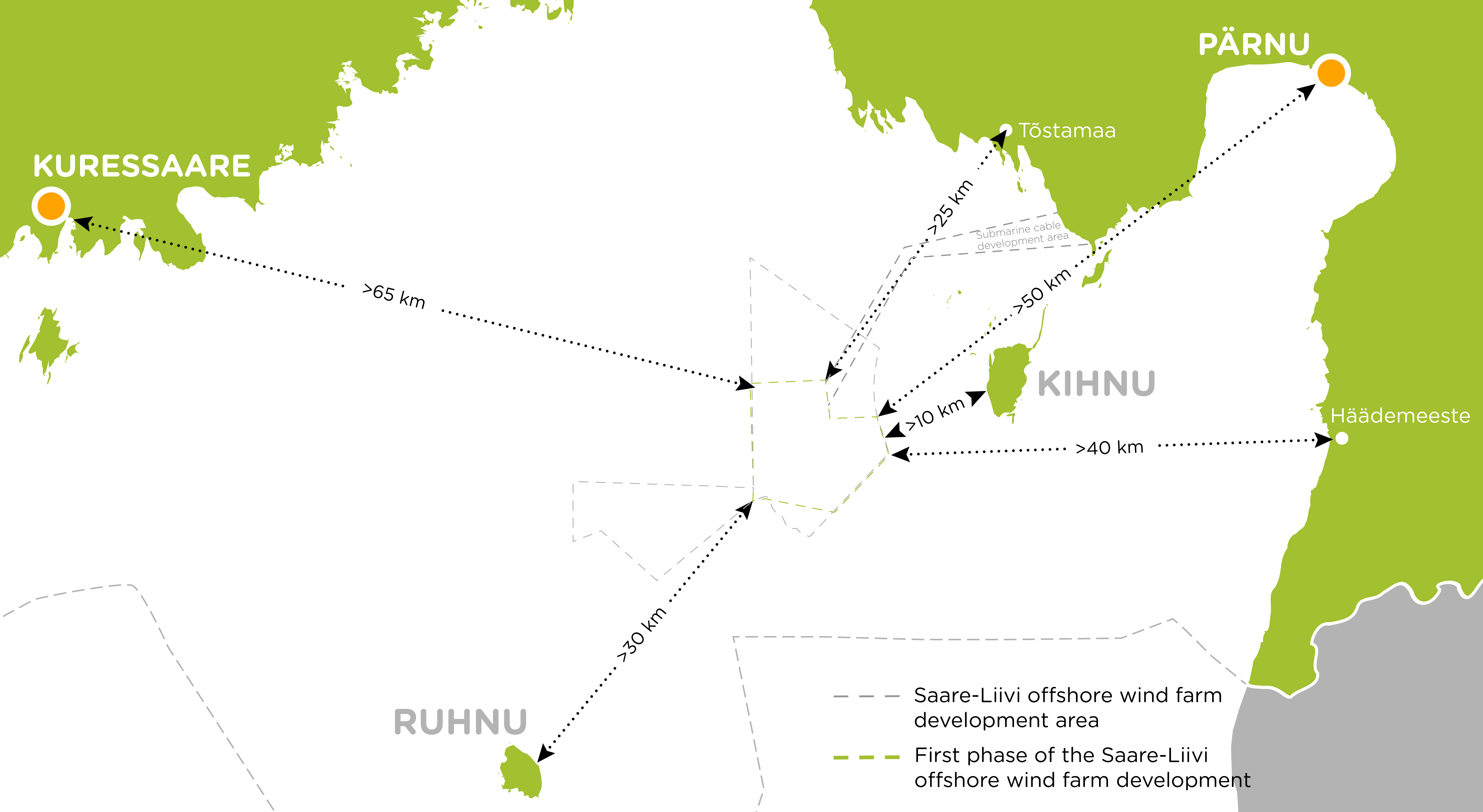According to the county-wide spatial plan established in 2017 for the maritime area bordering Pärnu County, areas in the Gulf of Riga are defined wherein offshore wind farms can be built. The building permit application submitted by Utilitas in 2021, met the conditions of the plan, and the Consumer Protection and Technical Supervision Agency (TTJA) initiated the building permit procedure at the end of the year.
The object of the superficies licence is the production of electricity and/or hydrogen through offshore wind power plant facilities. The capacity, number, and height of the wind turbines will be determined in the course of the superficies licence procedure, including the environmental impact assessment (hereinafter EIA) and depends on the nature protection, technical, and national defence restrictions as well as economic factors.
According to the technical conditions issued by the grid company, the first stage of development includes the erection of approximately 80 wind turbines with a total capacity of 1,200 MW, with an expected annual electricity production of over 5 TWh.





